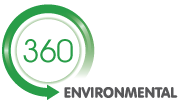European Waste Catalogue codes
Any controlled waste that is collected in the UK must, under Duty of Care, be covered by a Waste Transfer Note or, for Hazardous/Special Waste, a Consignment Note.
One of the requirements of these documents is to describe the waste. This will require some written description that will vary according to the waste carrier, but it will always require a EWC code. This is a list of wastes that has been produced by the EU to standardise the description of waste across Europe and to enable waste to be recorded, monitored and controlled more effectively.

There are a number of common codes shown below, but the wastesupport.co.uk search engine initially developed with the Environment Agency enables a code to be rapidly identified using a word search or by drilling into the chapters. Since then, the Agency’s view is that the Guide is now misleading as the use of WM3 will often come up with a different answer. Their view is that you should therefore refer to WM3 – especially for hazardous wastes – and not the wastesupport facility.
SEPA has its own guidance but just to confuse things further, this will often come up with different answers again.
The EWC codes were originally transposed into UK regulation through the List of Wastes Regulations 2005, but these were revoked in the 2015 Haz Waste Regs with the reference point being 2000/532/EC: Commission Decision of 3 May 2000 that was amended in 2015.
The European Waste Catalogue is made up of approximately 650 different codes divided into 20 chapters, each of which contains a number of sub-categories. Wastes that are considered to be hazardous are denoted by an asterisk in the list. Each code is six digits and many codes are double entries where there will be a code for the non hazardous version of the waste and another – with asterisk – for the hazardous version. There are also codes that end in 99 which are used for ‘waste not otherwise specified’. Generally, the Agency does not like these to be used as a waste description on Transfer Notes and Consignment Notes.
When choosing a code, the EA require the following steps to be applied:
Step 1. Try to identify where in chapters 01 to 12 or 17 to 20 the waste is produced (i.e. the industry or process from which the waste arose, including household or similar waste). Using the information outlined in the bullet points above, identify the appropriate six-digit code for the waste, excluding codes ending with 99.
Step 2. If an appropriate waste code cannot be found in chapters 01 to 12 or 17 to 20, then the next step is to examine chapters 13, 14 and 15.
Step 3. If none of these waste codes properly describes the waste, try to identify whether the waste is described in chapter 16.
Step 4. If a suitable code still cannot be found, choose a 99 code from the appropriate chapter in Step 1.
Most mixed waste from commercial premises tends to be categorised under one number – 200301. However, this code is only supposed to be used where it is genuinely a complete mix of wastes. Where there are more than one waste types mixed together eg carboard, office paper and plastic bottles, separate codes should be shown for each although generally, the Agency preference is to use a single code with an appropriate written description.
Some of the most common codes are shown below which also illustrates the double entries.
General waste
20 03 01 general mixed waste including commercial waste and municipal waste. This code should also be used for DMR (Dry Mixed Recycling) where it is not just mixed packaging (15 01 06), but a brief written description should identify it as DMR.
20 01 01 paper and cardboard
20 01 02 glass
20 01 08 biodegradable kitchen and canteen waste
Construction waste
17 01 01 concrete
17 01 02 bricks
17 01 03 tiles and ceramics
17 01 06* mixtures of, or separate fractions of concrete, bricks, tiles and ceramics containing dangerous substances
17 01 07 mixtures of concrete, bricks, tiles and ceramics other than those mentioned in 17 01 06
17 02 01 wood
17 02 02 glass
17 02 03 plastic
17 02 04* glass, plastic and wood containing or contaminated with dangerous substances
Packaging waste
15 01 01 paper and cardboard packaging
15 01 02 plastic packaging
15 01 03 wooden packaging
15 01 04 metallic packaging
15 01 05 composite packaging
15 01 06 mixed packaging
15 01 07 glass packaging
Electrical equipment waste
16 02 09* transformers and capacitors containing PCBs
16 02 10* discarded equipment containing or contaminated by PCBs other than those mentioned in 16 02 09
16 02 11* discarded equipment containing chlorofluorocarbons, HCFC, HFC
16 02 12* discarded equipment containing free asbestos
16 02 13* discarded equipment containing hazardous components(2) other than those mentioned in 16 02 09 to 16 02 12
16 02 14 discarded equipment other than those mentioned in 16 02 09 to 16 02 13 (most common code for WEEE)
16 02 15* hazardous components removed from discarded equipment
16 02 16 components removed from discarded equipment other than those mentioned in 16 02 15
